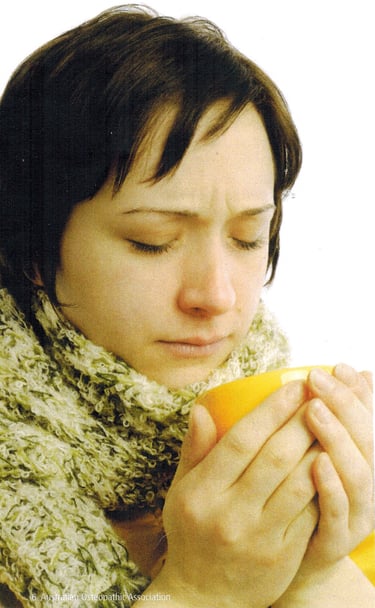Osteopathy and the flu:
1918 to 2009
As the Australian Government rolls out pandemic control measures to contain the spread of swine flu, osteopaths will prescribe the same treatment that saved lives during the 1918 Spanish flu outbreak..
Osteopathy and the flu
Osteopathic treatment of infectious disease was most notable during the deadliest flu pandemic in history, the Spanish flu outbreak of 1918. Census officials at the time reported a strikingly higher recovery rate among patients with the same type of doctor — an osteopath. Today, it appears that lessons from the 1918 pandemic haven't been learned. Despite parallels between the Spanish flu and the swine flu (both Type A H1N1 viruses) and evidence that points to osteopathy as a beneficial treatment for the symptoms associated with flu, public recognition still eludes the profession..
The Spanish flu outbreak
Millions died of pneumonia, haemoptysis, haemorrhage and immune hyper-reactivity as a result of the 1918 Spanish flu outbreak. Most medical doctors prescribed aspirin and morphine — each a double-edged sword as they relieved the symptoms but failed to treat the virus. Distance and strict quarantine alone protected Australia for a year. But once the virus reached our shores, thousands died. Excluded from service in the US Military Medical Corps, the large cohort of osteopathic physicians in private practice responded to the call for help when no others would, or could. They prescribed quarantine, hygiene, rest, warmth (even fever), high fluid intake and frequent regular manipulative procedures to trigger the body's natural healing mechanisms. Therapy was directed at the neck, spine and thorax which aimed to optimise functions and, more specifically, counter and build up resistance to the immune hyper-reactivity. Patients in the US treated by traditional or chemical- based medicine had a mortality rate of 30 to 40 per cent. In sharp contrast, less than 0.25 per cent of patients treated by an osteopath or chiropractor died.
Evidence-based approach
A campaign to gather and publish statistics supporting claims that osteopathy is an effectiv@flu treatment received wide publicity in the Osteopathic Physician and JAOA. Between October 1918 and June 1919, 2445 Doctors of Osteopathy (DOs) submitted a description of their treatment approach and a summary of their results.Of 110,120 influenza cases during this period, there were only 257 deaths (0.2 per cent mortality rate); and of 6258 pneumonia cases, there were just 635 fatalities (10.1 per cent mortality rate). This was then compared to an estimated mortality rate of 12 to 15 per cent from influenza and 25 per cent from pneumonia under the orthodox medical care.




Weighing up treatments
Mainstream medicine is looking to immunisation to combat swine flu. However, viruses tend to morph and many vaccinations quickly become ineffective. The prophylactic Tamiflu, which is currently being used to treat swine flu, has proven beneficial as a preventative measure but has little impact after infection. As in 1918, the best general response will be isolation, quarantine, warmth, fluids, chicken soup and intelligent osteopathy. Antibiotics, steroids and respiratory support will benefit the extremely ill requiring hospitalisation. But with a mortality rate of more than 50 per cent during the 2006 to 2008 bird flu outbreak still fresh in our minds, the sensible approach is to keep patients out of hospital.
What can osteopaths do?
•Look after yourself. You can do little to help others if you are suffering the same illness.
•Get skilled up. If you have little experience or confidence in treating acute infectious conditions, speak with an osteopath who has both.
• Inform patients of measures that you are taking to preserve public health. For example, that osteopaths in this practice routinely wash their hands with alcohol gel between each patient, benches are swabbed, linen is frequently changed and laundered, masks are worn where appropriate etc.
•Encourage patients to do their part. If they have flu-like symptoms then they should reschedule their appointment so as not to expose others in the office while they are infectious.
While swine flu might turn out to be a mild wave of influenza, it could well be a prelude to 'the big one' so don't be complacent. A patient might become host to a potentially lethal virus and your osteopathic treatment could greatly improve their recovery.
Osteopathy and the Flu : 1918 to 2009, Newsletter of the Osteopathy Australia, Osteo Life (Winter 2009) p6-7. www. osteopathy.org.au
